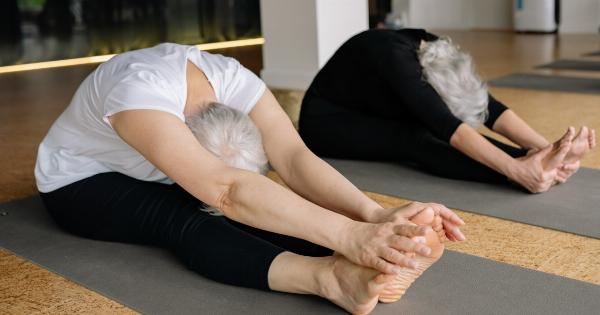Incontinence refers to the involuntary leakage of urine or feces, and it affects millions of people worldwide. It can occur due to various reasons, such as pregnancy, childbirth, obesity, aging, certain medical conditions, or even specific medications.
Incontinence can significantly impact a person’s quality of life, leading to embarrassment, social isolation, and a loss of self-esteem.
Kegel Exercises: An Effective Solution
Kegel exercises, also known as pelvic floor exercises, are a beneficial and natural way to help manage and even alleviate symptoms of incontinence.
These exercises involve contracting and relaxing the muscles of the pelvic floor, which support the bladder, uterus, rectum, and other organs. By strengthening these muscles, you can improve your bladder control, reduce leakage, and regain confidence.
Finding the Right Muscles
Before you can start doing Kegel exercises, it’s essential to locate the correct muscles. One way to identify them is by attempting to stop the flow of urine while you’re in the middle of urinating.
The muscles you use to do this are the ones targeted by Kegel exercises. However, it’s important not to make a habit of stopping the flow of urine as a regular practice, as it can lead to other complications.
How to Perform Kegel Exercises
Now that you’ve identified the correct muscles, you can begin doing Kegel exercises. Follow these steps to perform them effectively:.
Step 1: Get in Position
Find a comfortable position, whether it’s lying down, sitting, or standing. Make sure your body is relaxed, and there is no tension in your muscles.
Step 2: Contract the Muscles
Squeeze the muscles of your pelvic floor together. Imagine as if you’re trying to lift and hold a marble or stop the flow of urine. Ensure that you’re not tightening your abdomen, buttocks, or thigh muscles.
Only focus on the pelvic floor muscles.
Step 3: Hold the Contraction
Hold the contraction for about 3-5 seconds, gradually working your way up to 10 seconds if possible. Be careful not to hold your breath while performing the exercise. Remember to keep breathing steadily.
Step 4: Release and Relax
Slowly release the contraction and relax your muscles for a few seconds before starting the next repetition. Take a deep breath and exhale, allowing any tension or stress to leave your body.
Step 5: Repeat Regularly
Repeat the contraction, hold, release, and relaxation sequence about 10-15 times per session. Aim to perform these exercises at least three times a day.
Tips for Success
Here are some helpful tips to maximize the effectiveness of your Kegel exercises:.
1. Be Consistent
Consistency is crucial when it comes to Kegel exercises. Set aside specific times each day to perform them and stick to your routine. Over time, you’ll start noticing improvements in bladder control.
2. Start Slowly
If you’re new to Kegel exercises, begin with shorter contractions and gradually build your way up to longer durations. It’s better to start gently and avoid overexerting your muscles.
3. Increase Intensity
As your muscles become stronger, you can increase the intensity of your exercises. Instead of just contracting and holding, try quick contractions in succession or holding the contraction for a longer duration.
4. Avoid Straining
While performing Kegel exercises, it’s essential not to strain or push too hard. The goal is to strengthen the muscles gradually without causing any discomfort. If you experience pain or discomfort, consult a healthcare professional.
5. Combine with Lifestyle Changes
Kegel exercises work best when combined with certain lifestyle changes. Avoid foods and beverages that irritate the bladder, maintain a healthy weight, quit smoking, and practice mindful hydration by drinking enough water throughout the day.
Kegel Exercises for Specific Types of Incontinence
Depending on the type of incontinence you’re experiencing, there are specific variations of Kegel exercises that may be more beneficial:.
Stress Incontinence
For stress incontinence, which typically occurs during physical activities such as coughing, sneezing, or exercising, focus on long contractions and holding them for a longer duration.
Urge Incontinence
Urge incontinence involves a sudden and intense urge to urinate, often followed by leakage. For this type, practice quick contractions of the pelvic floor muscles to suppress the urge and strengthen the control.
Mixed Incontinence
If you experience a combination of stress and urge incontinence, a combination of exercises targeting both types may be beneficial. Consult with a healthcare professional for personalized guidance.
Seeking Professional Guidance
If you’re uncertain about performing Kegel exercises correctly or if you’re not experiencing any improvement in symptoms, it’s advisable to seek professional guidance.
A healthcare provider or a pelvic floor physical therapist can provide proper assessment, guidance, and additional treatments if necessary.
Take Charge of Your Incontinence
Incontinence doesn’t have to dictate your life. By incorporating Kegel exercises into your daily routine and making positive lifestyle changes, you can take charge of your condition and improve your quality of life.
Stay consistent, be patient, and don’t hesitate to seek professional help. Remember, managing incontinence is possible, and you deserve to live with confidence.




























